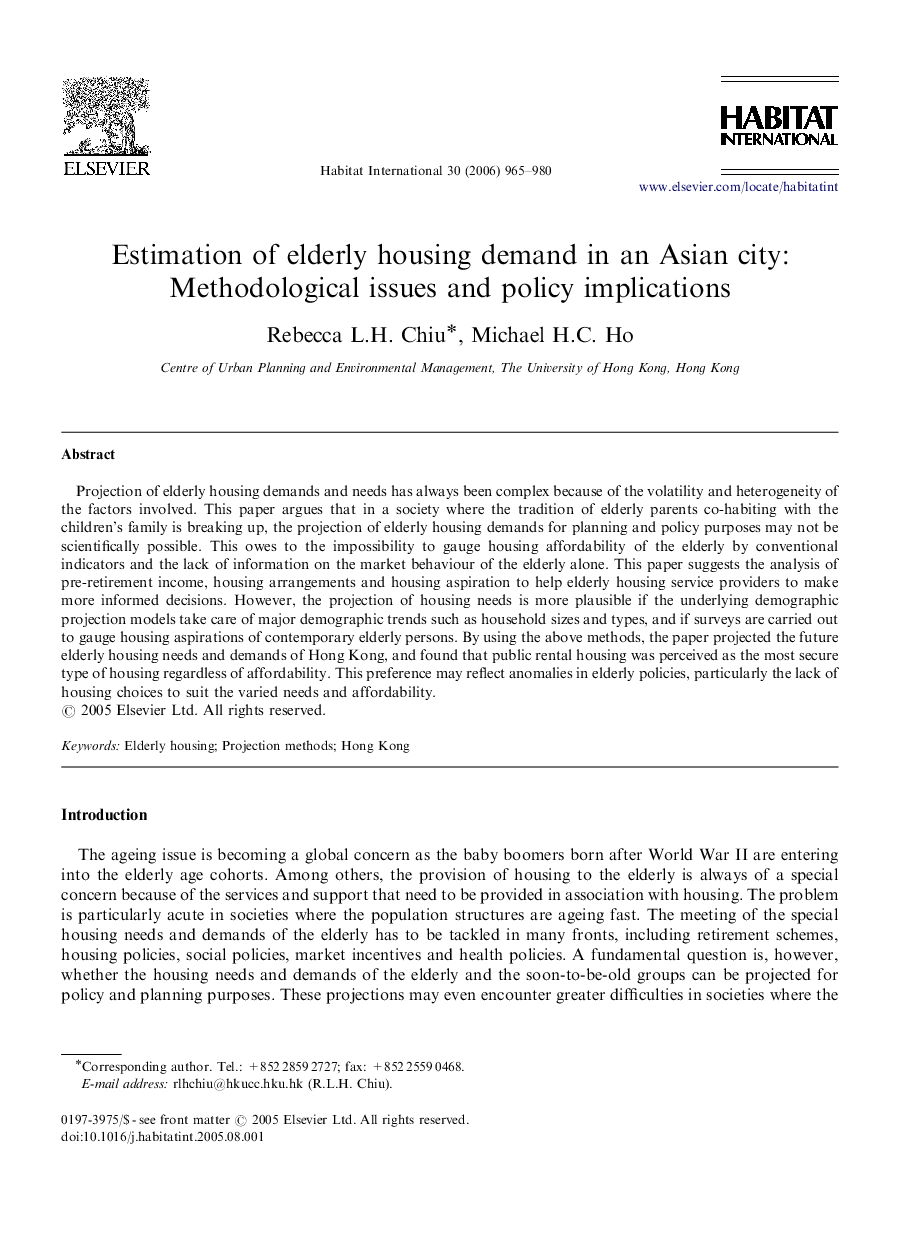| Article ID | Journal | Published Year | Pages | File Type |
|---|---|---|---|---|
| 1048543 | Habitat International | 2006 | 16 Pages |
Projection of elderly housing demands and needs has always been complex because of the volatility and heterogeneity of the factors involved. This paper argues that in a society where the tradition of elderly parents co-habiting with the children's family is breaking up, the projection of elderly housing demands for planning and policy purposes may not be scientifically possible. This owes to the impossibility to gauge housing affordability of the elderly by conventional indicators and the lack of information on the market behaviour of the elderly alone. This paper suggests the analysis of pre-retirement income, housing arrangements and housing aspiration to help elderly housing service providers to make more informed decisions. However, the projection of housing needs is more plausible if the underlying demographic projection models take care of major demographic trends such as household sizes and types, and if surveys are carried out to gauge housing aspirations of contemporary elderly persons. By using the above methods, the paper projected the future elderly housing needs and demands of Hong Kong, and found that public rental housing was perceived as the most secure type of housing regardless of affordability. This preference may reflect anomalies in elderly policies, particularly the lack of housing choices to suit the varied needs and affordability.
